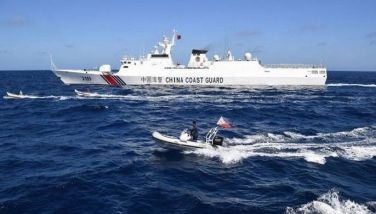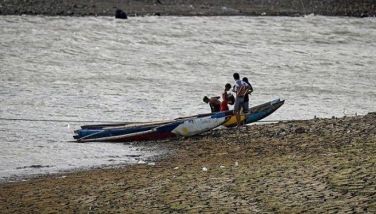DOLE denies Human Rights Watch report on Philippine child labor
MANILA, Philippines - Reports that the government has failed to implement laws against child labor are baseless, the Department of Labor and Employment (DOLE) said yesterday.
Secretary Rosalinda Baldoz said DOLE and other concerned government agencies have been exerting efforts to eliminate the worst forms of child labor in the country.
“I believe a near-blanket assessment cannot issue from a field research that is limited in scope,” she said.
She was reacting to a report of the international organization Human Rights Watch (HRW).
The HRW report said government has not done enough to protect children from the hazards of child labor in small-scale gold mining and that the government has largely failed to implement laws against the worst forms of child labor.
It accused the government of failing to protect children digging and diving for gold in dangerous small-scale mines.
The report “What... If Something Went Wrong: Hazardous Child Labor in Small-Scale Gold Mining in the Philippines” presented how thousands of Filipino children – some just nine years old – work in illegal small-scale gold mines, mostly financed by local businessmen.
“Children work in unstable 25-meter deep pits or underwater along the coastal shore or in rivers, and process gold with mercury, a toxic metal,” read the report.
It recalled an incident last September 2014 where a 17-year-old boy suffocated in an underground mine for lack of a machine to supply oxygen.
The government must act on its public commitment to end child labor in mining, according to Juliane Kippenberg, HRW associate children’s rights director and author of the 39-page report.
“Filipino children are working in absolutely terrifying conditions in small-scale gold mines,” Kippenberg said.
The government prohibits dangerous child labor, but has done very little to enforce the law, Kippenberg said.
“Small-scale mining provides a vital livelihood for many Filipinos,” Kippenberg said.
“But the government needs to take urgent steps to ensure a safe and child-labor-free mining sector so that families can earn an income without putting their children at risk.”
Baldoz said HRW had briefed her on the result of the field research report.
The report highlighted the challenges in the country’s fight against child labor, she added.
However, DOLE as lead government agency has always been steadfast in addressing worst forms of child labor, Baldoz said.
Through the government’s anti-child labor programs livelihood assistance has been provided to over 14,000 parents of child laborers, she added.
More than a hundred barangays nationwide have also been declared child labor free since 2014, Baldoz said.
“In 2014, the DOLE regional offices, with the Bureau of Workers with Special Concerns as lead, have profiled 75,724 child laborers in 406,887 households. At the end of the year, 30.5 percent of the profiled child laborers have been encoded in a database,” she said.
DOLE regional offices have promptly dealt with child labor incidence in Camarines Norte, Masbate and Compostela Valley, Baldoz said.
“While no child laborer was found working in major mining operations in the area, there were child laborers found working in small-scale mining activities, and the legal service recommended livelihood intervention for parents of child laborers,” she said.
Courts have convicted about 97 Anti-Child Labor Law violators, Baldoz said.
For the past two years, the US Department of Labor has cited the Philippines as having achieved “significant advancement” in its efforts in eliminating the worst forms of child labor, she added.
Field research
HRW conducted the field research in Camarines Norte and Masbate in 2014 and 2015.
More than 135 people were interviewed, including 65 child miners between the ages of nine and 17.
Beyond the fears of mine collapse and drowning, the children complained of numerous health problems, including back and body pain, skin infections, fevers and spasms.
In underground mines, children risk injury from falling rocks and wood beams, pit collapse and lack of oxygen.
Underwater mining for gold, locally known as “compressor mining,” puts adult and child miners at risk of drowning, decompression sickness and bacterial skin infections.
Staying underwater for several hours at a time in 10-meter-deep shafts, the miners receive air from a tube attached to an air compressor at the surface.
This work is carried out by adolescent boys and adult men.
Several boys described moments of fear when they dived for the first time.
In recent years, the government has taken some important steps to ensure education for all, but the number of out-of-school children in the country remains high, Kippenberg said.
“Children, mostly from impoverished households, skip school because of their mining work and sometimes drop out altogether. – With Rhodina Villanueva
- Latest
- Trending
























